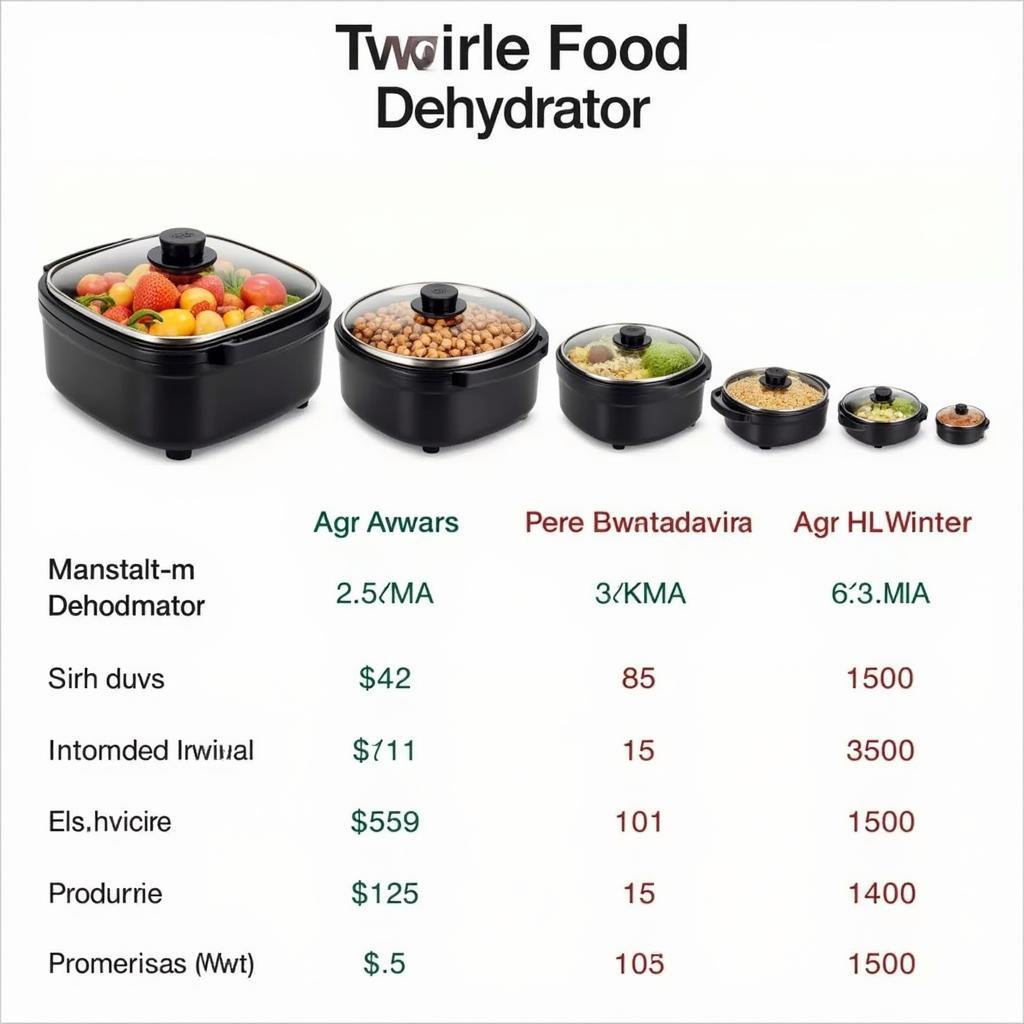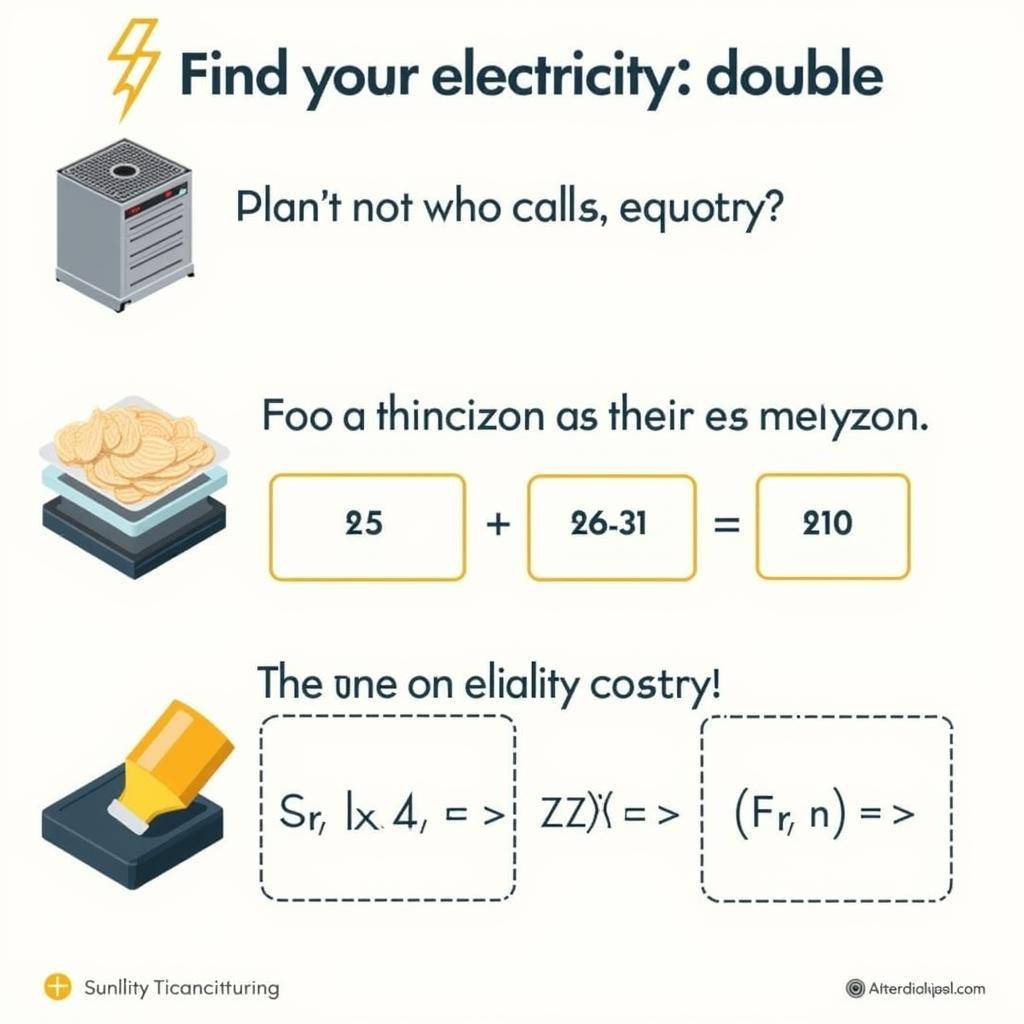Food dehydrators are a fantastic way to preserve food, create healthy snacks, and even make your own jerky. But a common question that pops up is: Do Food Dehydrators Use A Lot Of Electricity? The answer isn’t a simple yes or no. It depends on several factors, and understanding these will help you make informed decisions about using your dehydrator efficiently.
Factors Affecting Electricity Consumption
Several factors contribute to how much electricity a food dehydrator uses. Knowing these can help you minimize your energy consumption and save money.
-
Wattage: Dehydrators come in a range of wattages, typically between 250 and 1000 watts. Higher wattage models generally dry food faster but consume more electricity. A 600-watt dehydrator will naturally use more power than a 250-watt model.
-
Dehydrator Size: Larger dehydrators with more trays naturally require more power to operate than smaller models. If you only dehydrate small batches of food, a smaller dehydrator is a more energy-efficient choice.
-
Food Type and Quantity: The type and amount of food being dehydrated significantly impacts electricity usage. Foods with higher water content, like watermelon or pineapple, take longer to dry and therefore use more energy. Similarly, a full dehydrator will require more power than one partially filled.
-
Drying Time: The longer it takes to dehydrate food, the more electricity is used. Factors influencing drying time include the food’s moisture content, the thickness of the slices, and the humidity level in the environment.
 Food Dehydrator Electricity Usage Comparison
Food Dehydrator Electricity Usage Comparison
- Ambient Temperature and Humidity: Dehydrators work more efficiently in warm, dry environments. If the surrounding air is already humid, the dehydrator will have to work harder to remove moisture from the food, leading to increased energy use.
Calculating Electricity Costs
Calculating the actual cost of running your food dehydrator is easier than you think. First, check the wattage of your dehydrator. Then, multiply the wattage by the number of hours you plan to use it. Divide this number by 1000 to get kilowatt-hours (kWh). Finally, multiply the kWh by your electricity rate to estimate the cost.
 Calculating Food Dehydrator Electricity Costs
Calculating Food Dehydrator Electricity Costs
For example, if you have a 600-watt dehydrator and run it for 10 hours, and your electricity rate is $0.15 per kWh, the estimated cost would be (600 10 / 1000) $0.15 = $0.90.
Tips for Reducing Electricity Consumption
There are several practical steps you can take to minimize the electricity consumption of your food dehydrator:
-
Choose the Right Size: Select a dehydrator size that suits your needs. If you regularly dehydrate large quantities of food, a larger model may be more efficient than running a smaller one multiple times. However, if you only dehydrate small batches, a smaller dehydrator is a more economical choice.
-
Prepare Food Properly: Slice food evenly and thinly to ensure consistent drying times. Pre-treating certain fruits and vegetables, like blanching, can also reduce drying time and therefore electricity usage.
-
Optimize Drying Temperatures: Don’t set the temperature higher than necessary. While higher temperatures may dry food faster, they also consume more energy. Refer to your dehydrator’s manual for recommended temperatures for various food types.
-
Maintain Proper Airflow: Ensure proper airflow within the dehydrator by arranging food evenly and not overcrowding the trays. This promotes efficient drying and reduces the overall operating time.
Conclusion
So, does a food dehydrator use a lot of electricity? While it’s not a negligible amount, with careful consideration and smart practices, you can minimize its impact on your energy bill. By understanding the factors affecting electricity use and implementing energy-saving tips, you can enjoy the benefits of dehydrating food without breaking the bank. does a food dehydrator use a lot of electricity may be a question you have, but by following the tips above, you’ll be able to use your dehydrator efficiently.
FAQ
-
How long does it take to dehydrate food? Drying time varies depending on the food type, thickness, and dehydrator model.
-
What foods can I dehydrate? You can dehydrate a wide variety of foods, including fruits, vegetables, herbs, meats, and even make your own yogurt.
-
How do I store dehydrated food? Store dehydrated food in airtight containers in a cool, dark, and dry place.
-
Can I dehydrate food in my oven? While possible, using an oven for dehydration is often less efficient and can result in uneven drying compared to a dedicated food dehydrator.
-
How do I clean my food dehydrator? Refer to your dehydrator’s manual for specific cleaning instructions. Most models have removable trays that can be washed by hand or in the dishwasher.
When you need support, please contact Phone Number: 02437655121, Email: minacones@gmail.com Or visit: 3PGH+8R9, ĐT70A, thôn Trung, Bắc Từ Liêm, Hà Nội, Việt Nam. We have a 24/7 customer care team.